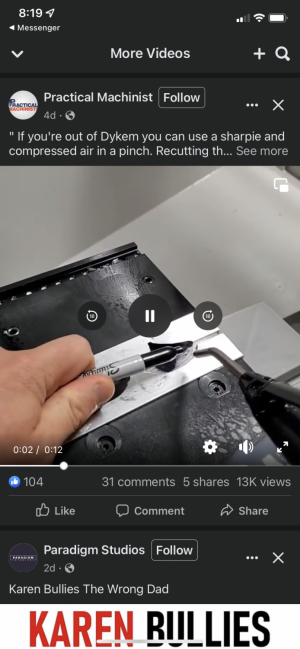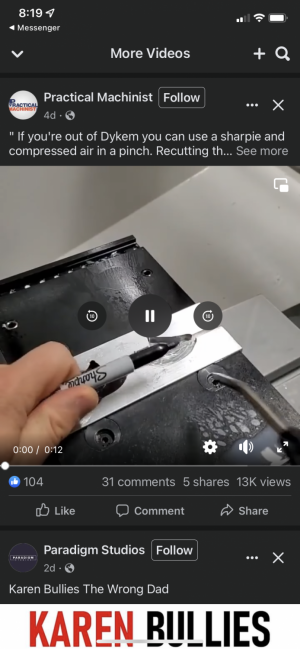- Joined
- Nov 14, 2020
- Messages
- 1,739
You can use a felt tip marker. Dykem would be my choice because I want full coverage the first couple times to really highlight.
I won't be looking for blue,I will be looking for where the blue is missing.
Don't get me wrong if the blue makes a mark that shows me the defect right off then I will address that area but more I am looking for interference (rubbing).
I won't be looking for blue,I will be looking for where the blue is missing.
Don't get me wrong if the blue makes a mark that shows me the defect right off then I will address that area but more I am looking for interference (rubbing).



